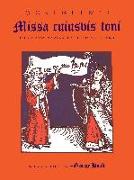Sirens
BücherAngebote / Angebote:
Source: Wikipedia. Pages: 35. Chapters: ACA Allertor 125, ACA Cyclone, ACA Hurricane, American Signal Corporation, ATI HPSS, Chrysler air raid siren, Civil defense siren, EOWS, Federal 3T22, Federal 500 siren, Federal Signal Corporation, Federal Signal Model 2, Federal Signal Modulator, List of cities with Thunderbolt sirens, List of sirens built by Alerting Communicators of America, Public Warning System, Siren (noisemaker), Stator, STH-10 Siren, Whelen 3000 series, Whelen Engineering Company, Whelen Hornet. Excerpt: A civil defense siren (also colloquially referred to as an air raid or tornado siren) is a mechanical or electronic device (modern-day sirens are electrically powered whether they are electronic or electro-mechanical) for generating sound to provide warning of approaching danger and sometimes to indicate when the danger has passed. In some areas in the United States, civil defense sirens may sound in the late morning and early afternoon on a regular basis. Initially designed to warn of air raids in World War II, they were adapted to warn of nuclear attack and of natural phenomena such as tornadoes. The generalized nature of the siren led to many of them being replaced with more specialized warnings, such as the Emergency Alert System. In a mechanical siren, sound is generated by a motor driving a shaft with a special turbine (known as a rotor or chopper) on one or both ends. It will have only one fan if it is a single-toned siren, while if it is a dual-toned siren, it will have either one fan on each end or two fans in a stack on one end, with one fan having a few more blades than the other. Around each fan-or chopper or rotor-is a housing with a number of rectangular holes to match the number of fan blades. This housing is known as a stator. The end of each blade has a plate whose shape is matched with the rectangular holes and circular curve of the stator. The blades draw air in at the end and force it out through the slots in the housing in rapid pulses, as the plates on the end of the blades interrupts that flow, which is what produces the sound. Some mechanical sirens, such as the Federal Signal Thunderbolt series, also employ compressed air that is blown at the rotor to supercharge the sound from the siren, which causes the sound to be sharper and much louder than it would be with the chopper and stator alone. Modern sirens can reach up to, but not commonly, 135 decibels when measured 100 feet (30 m) away from the siren, the loudest confirmed siren ever produc
Folgt in ca. 5 Arbeitstagen




